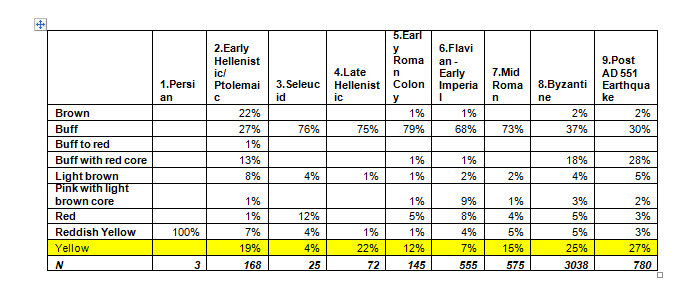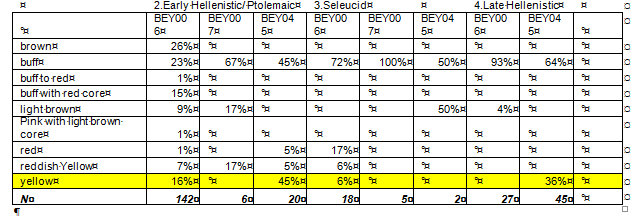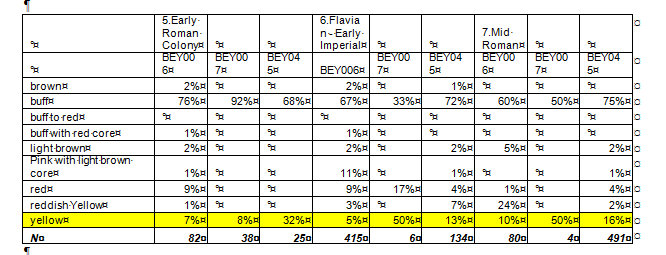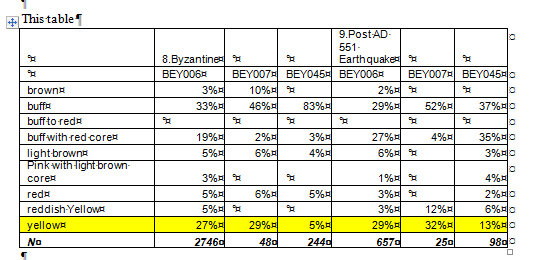The highest levels of yellow tile occur in the Late Hellenistic (22%) and the Byzantine, and post earthquake phases (25% and 27% ) - so I will take this as some support for my theory that yellow is more important n those periods. I think a more detailed analysis of the material in the Roman phases would also help recognise any intrusive and residual elements.
I haven’t the time to do a detailed spatial analysis by phase – I will leave that as an exercise for later – but a simple breakdown is by site:
This table
So some proof that colour is important in the Hellenistic and Byzantine period in Beirut and yellow correlates with public buildings. I will try to drill a bit deeper with the data to look at some specific areas at a later date.





 RSS Feed
RSS Feed
